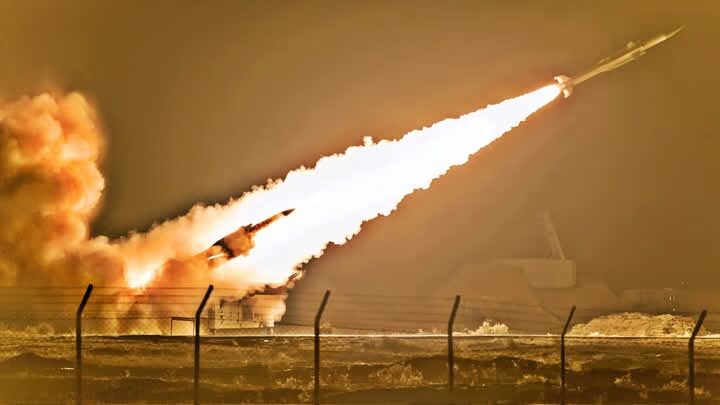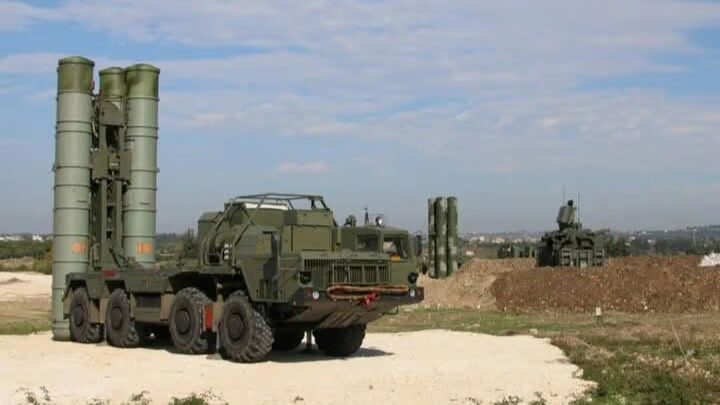
With a rise in global tension and the changing face of warfare, nations invest heavily in superior defence systems. In this respect, one of the most fascinating developments is America’s Golden Dome: an advanced missile defence and surveillance shield supposed to guard strategic assets from aerial threats.
Just like India’s Akashteer and the layered dome defence systems from Russia, the Golden Dome provides a next-generation technology of active defence.
ALSO READ- 58th Jnanpith Awards
The Genesis: History and the Need for the Golden Dome-
The idea of a protective dome from aerial threats is not new. During the Cold War, it was given serious momentum when the nations noted that Euro-America was at the crossroads of conventional warfare and ballistic missile capabilities and aerial supremacy.
Why the Golden Dome?
- Post-Hypersonic Warfare: Hypersonic missiles, drones and smart munitions are generated faster than the traditional radar-interceptor setups can respond efficaciously. Above all, the Golden Dome covers the void for a more layered, real-time reaction mechanism.
- Cyber-Physical Integration: For the first time, the dome brings cyber security into the realm of physical missile interception, disorderly-way raiding incoming dangers in the broadwash grounds or digital intrusions.
- Asset Protection: America requires fail-safe methods to safeguard its bases, communication hubs, and emergent defence nodes from preemptive strikes amid emerging geopolitical tensions, mainly in the Indo-Pacific and Eastern Europe.
Comparison with India’s Akashteer System-
It’s a complete command-and-control system for executing the air defence artillery of the Indian Army, which has been built by Bharat Electronics Limited (BEL) in India, famous as Akashteer.
Common Feature:
Network Centric Warfare: Both systems aim to build up capabilities for real-time information sharing and rapid decisions across command hierarchies.
Distinct Advantages of the Golden Dome-

- Enhanced AI Integration: The Golden Dome leverages advanced machine learning for threat prioritisation, allowing predictive analysis and faster response compared to Akashteer’s semi-automated model.
- More Scalable: The system is modular and can thus be installed across a range from small tactical units to full-fledged city-wide coverage.
- Sophisticated Energy Weapons: It probably includes directed energy weapons (lasers) as part of its arsenal for interception, which Akashteer does not support as yet.
How It Compares to Russia’s Dome Defence Systems-
Russia’s defence infrastructure is globally renowned for its S-400 and S-500 systems, which create a dome-like air defence shield capable of intercepting everything from fighter jets to hypersonic missiles.
Golden Dome Arsenal Strengths:
- AI Countering Cyber Attacks: While Russian Interceptor Systems are famous for kinetic interceptions, the Golden Dome uses cyber countermeasures to evade or disable any incoming threats through online methods.
- Fusion of Sensors: In this area, LIDAR, infrared, acoustic and electromagnetic sensors are used in creating a situational awareness map in a 360-degree mode, which goes far beyond the radar-only dependence of Russian systems.
- Operational Autonomy: A high level of automation in threat detection and feedback should enhance effectiveness under pressure by decreasing time for human decision-making.
- Limitations Compared to Russian Domes: Proven in Battle: The S-400, among other Russian systems, has undergone real-world deployments and battlefield tests, while the Golden Dome is still under limited testing.
- Durability under Extreme Conditions: Russian domes are purposely designed for performance in Arctic and rough conditions, something that remains qualified for the Golden Dome.

Strategic and Technological Effects-
Changes in regard to strategic partnerships, defence procurements, and even air combat will arguably arise following the growth and possible deployment of the Golden Dome of America.
Strategic Importance-
- NATO Synergy: Compatibility with NATO missile defence grids thus enhances collective security.
- Deterrence Enhancement: Functions as a visual and technological deterrent, discouraging pre-emptive strikes by showcasing near-invulnerability.
- Command Superiority: Enables centralised, faster decision-making in multi-theatre operations, which is crucial in modern warfare scenarios where timing is everything.
Technical Highlights of the Golden Dome-
Quantum Radar Technology:
Immune to jamming and stealth, this next-gen radar can detect even the smallest drones or stealth missiles. Even in a cluttered environment, it is capable of tracking objects with nearly perfect accuracy, thanks to quantum entanglement and photon detection. Therefore, stealth coatings or technologies that would mask a focus signal, which accompanies very high-end aircraft and missiles, cannot last to inhibit their use.
As a result, it is particularly important for detecting low-RCS objects, such as small UAVs in swarm attacks.
In addition, quantum radar is resistant to electronically contested environments, thus being a reliable solution for future-proof air surveillance.
Laser Interceptors:
It uses lasers to neutralise close-range threats silently and without delay, in addition to conventional interceptors. High-energy lasers go for absolute precision, focusing directed energy beams on heating and disabling the incoming projectiles while in flight.
This makes it favourable against swarm threats for prolonged engagements. Furthermore, the cost of operation is smoother, with the cost of each shot many times cheaper than launching a kinetic interceptor.
Self-Healing Mesh Network:
The system automatically routes its functions on any physical damage or cyberattack, safeguarding against a point of failure. It is designed to operate and share the processing and communication loads among several nodes, thus, the system is capable of reorganising itself at any given time when a node has failed either by hardware breakdown or cyberattack.
The mesh infrastructure includes AI algorithms for detecting anomalies in real time, triggering automated containment and recovery protocols. Such architecture enhances strength against cyber threats and increases availability and operational resilience in multi-domain warfare scenarios.
The system not only secures itself but is also adaptive in real-time, making every engagement a learning opportunity for wiser future responses.
Challenges and Controversies-
The Golden Dome is found promising, but it faced several critiques and practical challenges.
- High Development Costs: The estimates range up to billions, and critics claim that it is questionable if any real return on the investment for use in actual conflict situations can be justified.
- Accountability and Compliance: With international humanitarian law, raised by the high dependence of the AI system on an unattended system for making kill decisions.
- Deployment Vulnerabilities: Its performance would be compromised if nodes were sabotaged or overwhelmed, just as any centralised system.
Conclusion: A New Chapter in Global Defence Strategy-
The Golden Dome is not just another missile defence system. It is a symbol of future warfare, where AI, space technology, and cyber warfare converge to create omnipresent shields against evolving threats. As the U.S. races to operationalise it, countries like India with Akashteer and Russia with its formidable dome systems watch closely, anticipating a new arms race—not just of firepower but of intelligence, speed and resilience.
